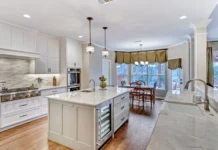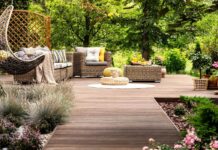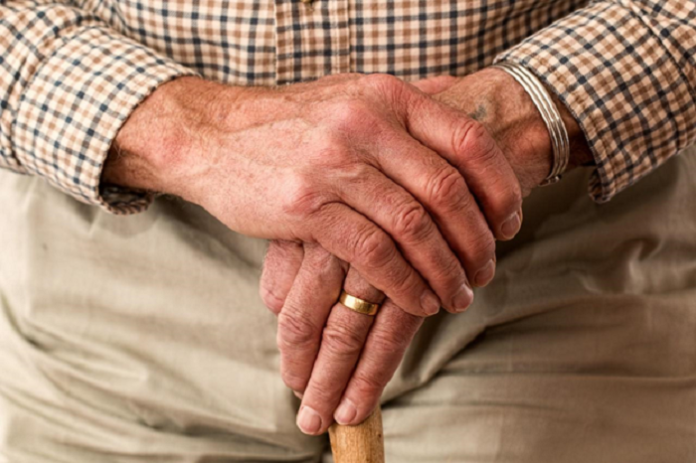
Most of us have people in our lives who are seniors, people we love and who we want to be able to experience life fully alongside us. But for those who don’t face joint pain or mobility issues, it can be hard to see how many obstacles to accessibility there are in our homes.
Even an act as simple as opening the front door or taking off your shoes can become much harder as you age, and if you want to make your home a place that is welcoming and accessible to all your loved ones, you may need to make a few changes.
The good news is that this doesn’t necessarily mean a grand re-design or expensive renovations: there are plenty of small changes that will make a big difference and which can be done over the course of a couple of weekends.
If you want to make your home more senior-friendly, here are five simple ways to start.
1. Get an Evacuation Chair
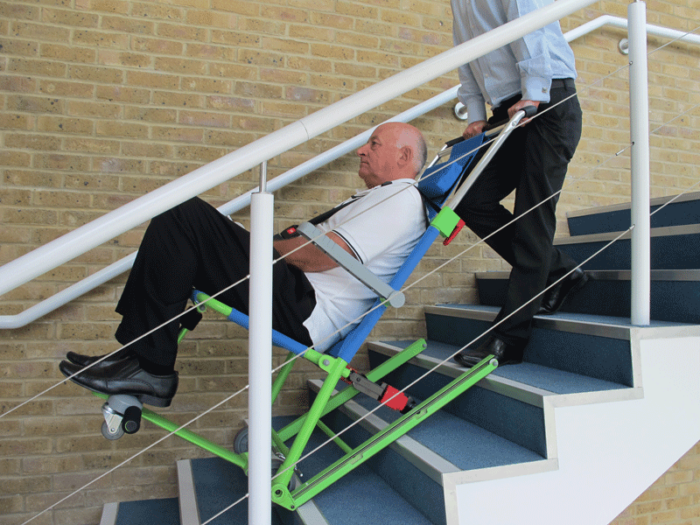
Modern North American homes tend to have a lot of stairs, and even bungalows are likely to have a short three or four-step flight between levels. Most of the time, this isn’t a problem — if you’re hosting people with mobility issues, you’re probably sticking to the main floor of the home, and when it is necessary to help them up or downstairs you can simply give them your arm.
But in the case of an emergency, this can quickly become a nightmare scenario. No one likes to think about the possibility that a house fire or other disaster will make it necessary to evacuate one’s own home, but the truth is that no house is 100% safe from such dangers. The most important thing you can do is ensure that you are prepared should something happen.
Fortunately, there are tools available that are specifically designed to help seniors and those with reduced mobility safely and quickly evacuate from any building.
Emergency evacuation chairs are simple devices specifically designed to help get seniors to safety. Outfitted with wheels and rubber runners that can navigate floors, stairs, and ramps, evacuation chairs are an easy solution that will help you and your senior guests sleep well at night (you can visit evacuscape.com to learn more about how to get an evacuation chair of your own).
2. Redesign Your Entryway
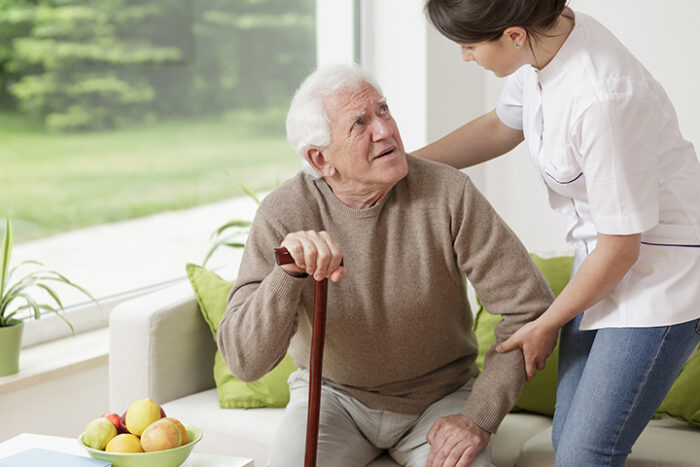
Did you know that 23% of falls that cause seniors to be hospitalized or enter a nursing home happen near the entrance of the house?
For those living in a snowy climate, entrances are a danger zone for over half the year. Rain, ice, and snow all make a fall more likely, and when you add in steps, door jambs, and indoor clutter, entryways can be a minefield for seniors with reduced mobility.
If you want to make your home more accessible for older friends and relatives, here are a few of the redesigns you should consider:
- Install rails beside stairs
- Add traction strips to steps
- Make sure your entryway is covered to reduce ice and snow build up
- Keep a bench inside the entrance so people can sit while removing shoes
These might seem like small steps, but they can make your entrance a lot more welcoming to those for whom a winter fall can have a far-reaching effect on health and well-being.
3. Install Grab Bars in Your Bathrooms
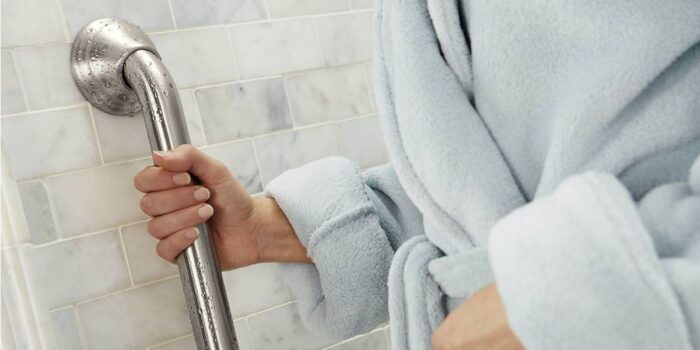
Like entryways, bathrooms can be particularly difficult for seniors to navigate. Not only is there the risk of slipping on smooth tiles or spilled water, there is the added problem of having to get up and down without help.
While it is worth considering a more ambitious redesign of your bathroom if you are likely to have a senior living with you, one basic feature all senior-friendly bathrooms should have are grab bars by the toilet and in the shower to make it easier for elderly folks to get up and down unassisted.
Grab bars are affordable and easy to install, but the difference they make can be enormous.
4. Re-Imagine Your Kitchen
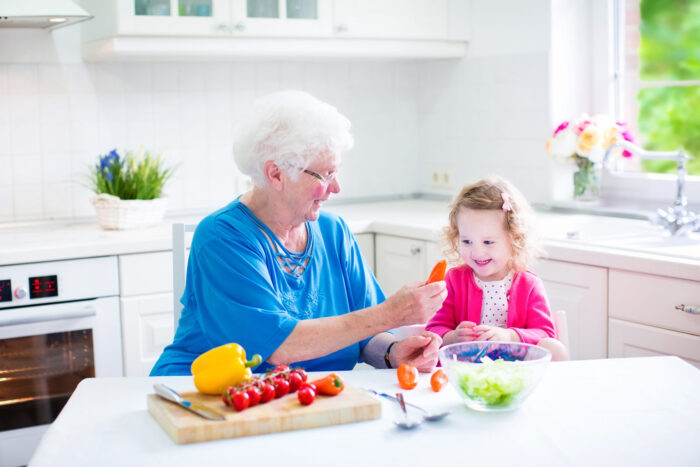
Nothing makes a home, a home like a kitchen. And when you’ve got company for the holidays, it’s natural for everyone to want to pitch in and help. But there might be things in your kitchen making it a lot harder for seniors to help with the cooking as much as they might want to.
Most able-bodied young and middle-aged people think nothing of bending over and rooting around in a pantry to find that spice box or bag of flour, but as people age, they often lose the kind of dexterity that makes these tasks second-nature.
You don’t need to buy a new oven or buy new cupboards to make your kitchen more senior-friendly: small things like installing a Lazy Susan in cabinets so everything is easily accessible can make it easier for your senior friends and relatives (and, let’s face it, everyone in your family) to navigate the kitchen without discomfort or injury.
5. Improve Your Lighting
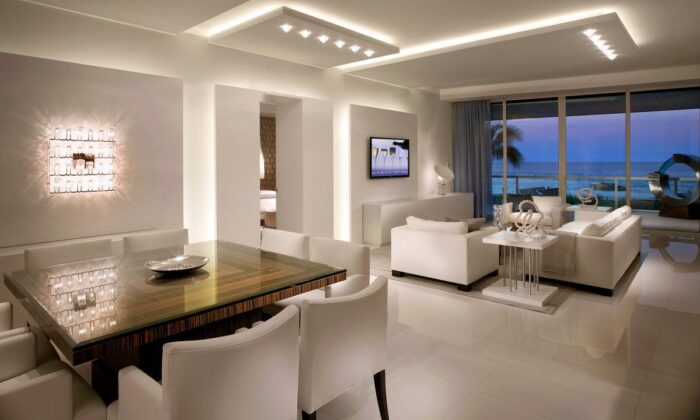
Just as mobility and dexterity are reduced by age, vision can deteriorate as well. Even if older members of your family are still able to see, low light can cause unhealthy eye-strain and fatigue. Making sure that the rooms in your house are well lit will make them more welcoming to people who can’t see as well, and will reduce the chances of falls and other accidents.
If our bodies are fit and able, we tend to take for granted all the things we can do. Getting down the stairs and out the door are second nature, and we don’t even need to think about what we’re doing. But when your mobility is reduced and your vision fades, suddenly these everyday actions can become major obstacles.
For this reason, if you want your house to be a place your senior family and friends feel comfortable and safe in, consider making upgrades in these five key areas. This won’t just make your home safer, it will make it more welcoming to everyone.




